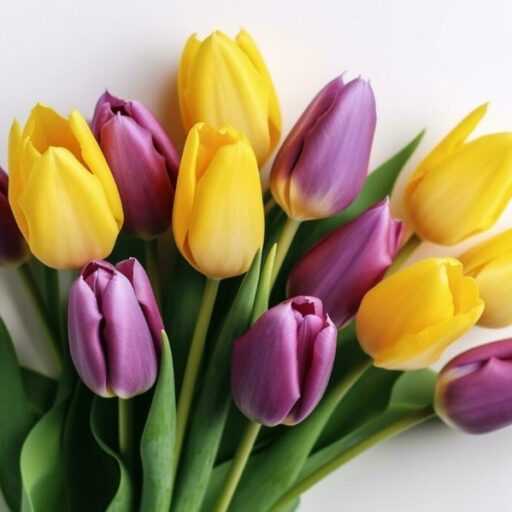Tulip Festival – The Early Years
The Kiwanis Club of Holland was chartered in 1953 by a group of local businessmen, school administrators and public officials. One of those charter members was Frank Taylor. Soon after forming the club Frank suggested that the club sponsor a Spring Festival. The original idea was to bring the community together for a day of festivities after a long cold winter.
Very early it was decided to have a parade and the American Legion Post 607 soon joined the planning along with the fire company. Both organizations had very active Ladies Auxiliaries and they too signed on to the idea of a Spring Festival. Almost immediately it was decided that all local organizations, clubs and businesses would be invited to participate in a parade. Right from the very start and continuing for all these years the parade has been an essential part of the festival. About the same time the Spring Festival changed to the TULIP FESTIVAL and the Holland Garden Club became involved.
During those early years, just like today, the Kiwanis Club met weekly for a dinner meeting. The club met at the Holland Central School (one building at that time) and the meal was prepared and served in the school cafeteria. Harold Brumsted, the principal/superintendent, along with Al Koerner, a local businessman and school board member, were both charter members. They both along with their wives were also active in a ball room dance club. They suggested that the festival include a formal ball room type dance on the evening of the festival. The close association of Kiwanis Club and the Holland Central School made it an easy decision to hold the dance at the school.
About the same time, it was decided that it might be a nifty idea to have a Tulip Festival Queen. Immediately the question arose about who could be a candidate and how would the queen be chosen. The club decided after much debate that candidates would be limited to just five girls in the senior class at Holland Central. The five candidates would be chosen by the senior class. It was also decided quite quicky that the queen would be chosen by popular vote. Many of the original Kiwanians were local businessmen many of whom were involved in retail stores. A voting system was developed that allowed everyone in the community to vote whenever and each time they made a purchase of one dollar or more at these local stores (there were many more back then – three gas stations, four grocery stores, two general stores, two car dealerships). Ballot boxes were located at each business.
First year (1956 ), first problem. Only three senior girls were interested in competing for the title of Tulip Festival Queen. The problem was resolved by recruiting two girls from the junior class. Interestingly, those two girls were candidates in both 1956 and the following year when they were seniors. There has never been a problem after that.
The next problem was when should the queen be crowned. That problem was solved by a change in the planning for the formal ball room dance to make it into a Coronation Ball. The planning from the very start was to have a live dance band. Next problem, the high school gym didn’t look much like a ball room. Those early Kiwanis members decided to transform the gym by creating a ceiling with crepe paper, add cabaret seating along with lavish planters, fake chandeliers, wall murals and a huge punch fountain. During those early years the club would typically work four evenings well past midnight hanging crepe paper and bringing thousands of bricks to create planter boxes. Decorative light poles were located along side tables surrounding the gym. A temporary stage was built for the band and the queen’s throne.
After two years of successful parades and coronation balls the club realized that there was nothing to do between the parade in the early afternoon and the ball in the evening. This gap was filled by adding a very lavish smorgasbord dinner in the school cafeteria. The dinner featured the favorite recipes of the Kiwanis wives and included many options. Numerous meat dishes were available and the dinner always included carved roast beef and turkey. Many people came just for the sumptuous deserts.
Over the years of course there have been many changes to the festival. In the early sixties the talent show (Queen’s Pageant) was substituted for the community wide voting. About the same time, all senior girls who wanted to be queen candidates were eligible. Judges from outside Holland were recruited to choose the queen. By the late sixties, the popularity of ball room dancing declined and a coronation ceremony in the auditorium was substituted for the coronation ball. The gym, previously the site of the ball, became available for a flea market which still later became the Arts & Crafts show still in place today. Still later the smorgasbord dinner was changed to a chicken barbeque which continued until Covid 19.
Over the years some festival events have come and gone such as an invitational track meet which is now a 5K run. When the Town had a baseball team many festivals featured a ball game. Some years featured hot air balloon rides and one year there were even helicopter rides.
The addition of the town parking lot on main street in the early 1980s allowed for a major change in the festival. Carnival rides and games were introduced and became a huge part of the festival. Change continues but while many changes have affected the festival many features of those early festivals remain. We still have a parade; a queen is still chosen and the community still comes together after a long winter.
